AM
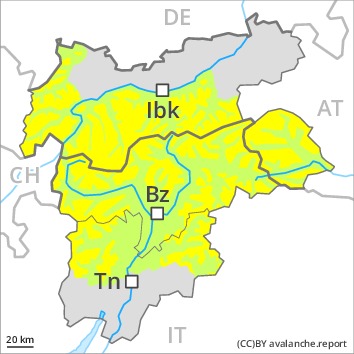
Danger level
 | 2400m
|
Avalanche Problem
PM
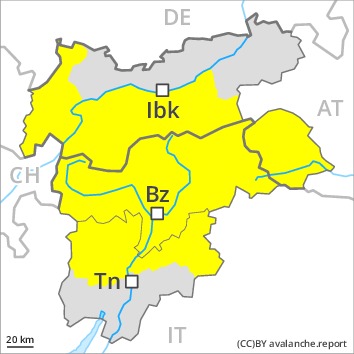
Danger level
 | 2400m
|
Avalanche Problem
 | | Wind-drifted snow |
|  | |  |
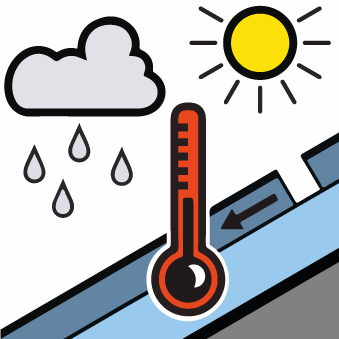 | | Wet snow |
|  | |  |
Wind slabs are to be evaluated with care and prudence. Slight increase in danger of wet and gliding avalanches in the course of the day.
The more recent wind slabs can be released in isolated cases, but mostly only by large additional loads, especially on very steep shady slopes above approximately 2400 m. Caution is to be exercised adjacent to ridgelines. The prevalence of avalanche prone locations and likelihood of triggering will increase with altitude.
Avalanches can additionally in isolated cases be released in the weakly bonded old snow, in particular by large additional loads, especially at transitions from a shallow to a deep snowpack, when entering gullies and bowls for example. These avalanche prone locations are rather rare.
As the day progresses as a consequence of warming during the day and solar radiation there will be a gradual increase in the danger of wet and gliding avalanches, especially on very steep sunny slopes.
Snowpack
dp.6: cold, loose snow and wind
dp.7: snow-poor zones in snow-rich surrounding
The mostly small wind slabs of the last few days are lying on unfavourable layers in particular on steep shady slopes above approximately 2400 m. As a consequence of mild temperatures and solar radiation the snow drift accumulations stabilised. Isolated avalanche prone weak layers exist in the centre of the snowpack.
The surface of the snowpack will freeze to form a strong crust and will soften during the day. Towards its surface, the snowpack is moist, in particular on steep sunny slopes below approximately 2400 m.
Tendency
Slight increase in danger of wet avalanches as a consequence of warming during the day.
AM
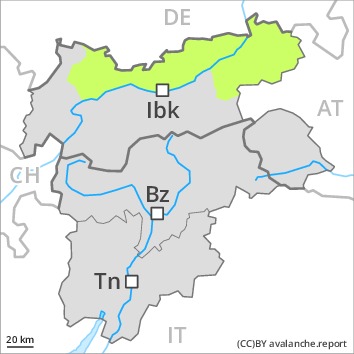
Danger level
 | 2200m
|
Avalanche Problem
PM
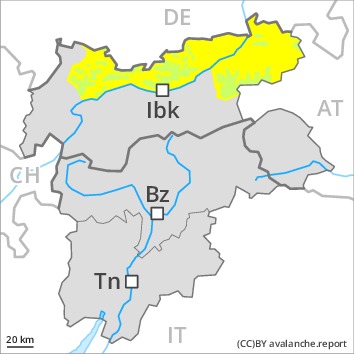
Danger level
 | 2200m
|
Avalanche Problem
 | | Wind-drifted snow |
|  | |  |
 | | Wet snow |
|  | |  |
Wind slabs require caution. Slight increase in danger of wet avalanches as a consequence of warming during the day.
The fresh wind slabs are in isolated cases prone to triggering on steep shady slopes above approximately 2200 m. The avalanche prone locations are to be found in particular adjacent to ridgelines and in gullies and bowls. The avalanches are only small. Wilder Kaiser Mountains- Waidring Alps and Kitzbühel Alps: The fresh wind slabs can be released in isolated cases in particular on steep shady slopes above approximately 1800 m.
As a consequence of warming during the day moist loose snow avalanches are possible in the middle of the day, especially on very steep sunny slopes, and in steep rocky terrain below approximately 2200 m.
Snowpack
dp.6: cold, loose snow and wind
The mostly small wind slabs are lying on soft layers on shady slopes above approximately 1800 m. As a consequence of rising temperatures the snow drift accumulations will stabilise during the next few days. Individual weak layers exist in the centre of the snowpack. The surface of the snowpack has frozen to form a strong crust and will soften during the day. Towards its surface, the snowpack is moist, in particular on very steep sunny slopes. At low altitude a little snow is lying.
Tendency
Slight increase in danger of wet avalanches as a consequence of warming during the day.

















